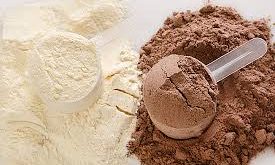Milk is loaded with a wide variety of nutrients that help ensure good health and wellbeing. However, these benefits will be available to you only if you choose the best milk brand, one that is purest and freshest and completely free from pesticides and adulterants. In the current scenario, adulteration in milk is a big problem. If you consume suchadulterated milk, it not only robs you the health benefits of pure milk, but may actually harm your health. Here are some tests that you can perform in your home to check for adulterants and establish the quality of milk.
Water – This is probably the most common adulterant found in milk. It won’t harm you if the water is clean, but this is not often the case. To test the presence of added water in milk, just put a drop of milk on a polished surface that has been tilted so that the drop can slide down on its own. Make sure that the milk you take for this test is at room temperature. Now, if the drop moves slowly and leaves a white trail behind, it means that the milk is pure whereas if the drop slides fast without leaving any mark, it means water has been added.
Starch – Starch is used to make the milk appear thicker. This is usually done when water has been added to milk. Starch adulteration in milk can be harmful since you can never be sure what quality of starch was used. Further, it will also add unwanted calories to your diet. To test the presence of starch in milk, just add a few drops of Iodine solution to the milk. If the milk sample turns blue, it will indicate the presence of starch. You can get iodine solution from your local medical store.
Urea – Presence of Urea in milk can be extremely harmful for your health. To test the presence of Urea in milk, take some milk in a test tube and add half teaspoon of arhar (turdaal) or soyabeen powder. Now, mix these ingredients thoroughly. After five minutes, take a red litmus paper, dip it into the mixture and take it out after 30 seconds. If the red litmus paper turns blue, it means that the milk contains Urea.
Vanaspati – For this test, you will need some hydrochloric acid and some sugar. Put 3 ml of milk in a test tube and add 10 drops of hydrochloric acid. Then, you also need to add one teaspoon of sugar. Leave the mixture for 5 minutes. After this, when you examine the mixture, if you notice red coloration, it would mean that the milk contains vanaspati.
 Newspatrolling.com News cum Content Syndication Portal Online
Newspatrolling.com News cum Content Syndication Portal Online






